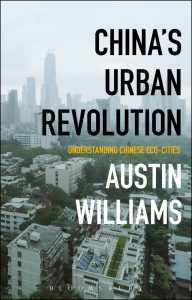The Dangers of Safety
 This article was originally published in The Spectator Coffee House
This article was originally published in The Spectator Coffee House
by Austin Williams
It’s been more than six years since the Grenfell Tower fire killed 72 people and made many more homeless, yet the survivors – and families of those who died – are still waiting for answers.
The Grenfell Inquiry, which launched a few months after the disaster, was meant to hold people to account, to question the management and design of high-rise buildings and to rebuild trust. Yet the only tangible results so far seem to have been the £70 million paid to an army of lawyers.
The Inquiry has been labelled a ‘never-ending circus’ by the British-Nigerian novelist, Jendella Benson. It’s a description that is hard to disagree with. And while the Inquiry trundles on, a different kind of crisis is looming large. In the wake of the Grenfell disaster, there is widespread confusion about regulation within the building industry. Architects and builders are struggling to keep up with the latest rules and they fear what new and confusing regulation might be around the corner. All this is helping to exacerbate the housing crisis, with little benefits to either Grenfell victims or others who live in high-rise flats.
The real human tragedy of Grenfell must never be forgotten and no one should seek to diminish its impact. But we must also realise that we are witnessing a significantly increased paranoia in the construction industry linked to the revelations of the Inquiry: hikes in insurance premiums, increased market volatility, mortgage uncertainty, leaseholder debt stretched to breaking point, and the lowest level of house-building since the war. The Inquiry and those involved in the construction industry, from architects to developers, remain oblivious to these negative impacts at their peril.
One problem is that the Inquiry has made an art out of blame. Suspicion is now the watchword. Litigation is the default. For five years, construction specialists have pored over every word in every email written by naïve architects, misguided contractors and financially-squeezed suppliers involved at Grenfell. Few would survive this level of forensic scrutiny without some mis-spoken word surfacing. The Inquiry’s rigorous approach to fault-finding has led to many companies covering their backs: they are terrified of repercussions. And everyone is desperate to avoid any possible censure.
Of course, accountability is important. The scandalous omissions and blatant manipulation of data on the Grenfell project require targeted retribution. It is an undisputed fact that the residents’ legitimate concerns were ignored. For that, changes must be made and heads must roll. That said, the official response to Grenfell implies that risk-aversion will forever more play a central role in the construction industry, and this comes with a number of problematic, unintended consequences.
First of all, we are in danger of losing perspective. Residential fires are rare events. The number of fatalities in fires has been in terminal decline for 40 years. The laser focus on Grenfell has resulted in an over-concentration on the dangers of construction rather than on the steady improvements over the years.
The initial response to the Grenfell disaster had been a call for greater competence across the construction sector. This was welcome. But unfortunately, over the last six years, many professionals have been unable to keep up with the new rules and regulations as they are bombarded with policy consultations, legislative changes and endless revisions. This is giving rise to less competence (even incompetence) as parties rely on mechanistic tickbox compliance without thinking.
The government, for example, has advocated that residential buildings over 30 metres in height need to be designed with two staircases. The Chief Fire Officers Association says that the two staircase rule should apply to 18 metre-high buildings. The Royal Institute for British Architects Expert Advisory Group on Fire Safety says it should be 11 metres. The government seem too cowardly to decide and so are leaving various interest groups to fight it out.
This muddle is driving down the confidence of those at the sharp end of the profession who recognise that any one of these options is as arbitrary and ill-thought out as the next. They still need to comply. But with what rule or regulation?
The confusion shows no sign of ending any time soon. The Mayor of London recently announced that all buildings taller than 30 metres must have two staircases, even if they are currently submitted for planning approval. As a result, the drawings, financial criteria, and business plans will have to be re-modelled. With no regard for the investors, nor those seeking homes, around 125,000 projects in the capital may become unviable overnight. And where is the evidence that the second staircase will make the finished housing any safer?
Some developers are pulling out of projects that could provide much-needed housing. A number of developers are planning low-rise buildings to beat the system, thereby denying the market of hundreds of apartments that might otherwise be built.
The upshot is that while the Grenfell Tower fire was a catastrophe, there is another danger slowly unfolding in the disastrously low housebuilding statistics and the record high levels of construction insolvencies. Ironically, an over-concentration on demonstrating safety at all costs will inevitably give rise to an industry even more disconnected from the real lives of the people it serves.
Austin Williams
This article was originally published in The Spectator Coffee House






